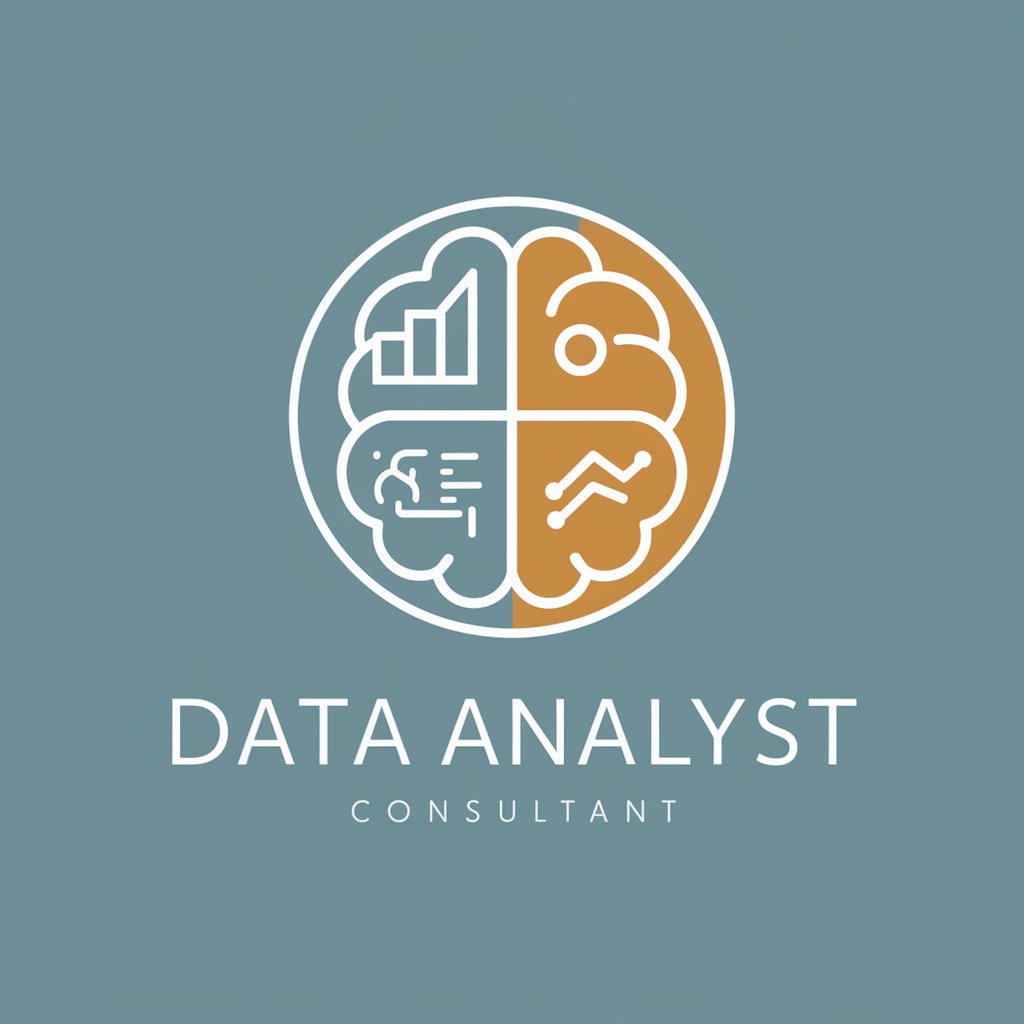Data Warehouse Architect - Data Structuring Advice

Hi there! Let's make your data work for you.
AI-powered Data Warehousing Insights
How can I best structure my data warehouse for future scalability?
What are the key dimensions and facts to consider for my dataset?
Can you help me optimize my SQL queries for better performance?
What are some best practices for integrating new data sources into my data warehouse?
Get Embed Code
Understanding Data Warehouse Architect
Data Warehouse Architect is designed as a conversational and approachable AI consultant, specializing in data analytics and warehouse structuring. It assists users in making informed decisions on how to structure their data warehouse effectively, providing guidance and expertise tailored to the specific needs of their business. By analyzing provided datasets, it suggests optimal data modeling techniques to ensure that the data warehouse is not only effective in answering current business questions but also adaptable for future data integrations. For example, if a retail company wishes to analyze their sales data over time, Data Warehouse Architect could recommend structuring the data using a star schema, where sales data forms the central fact table, surrounded by dimension tables like time, product, and customer demographics. This approach simplifies queries for business intelligence tools, enhances performance, and makes the data warehouse scalable and flexible for additional analytics needs. Powered by ChatGPT-4o。

Core Functions of Data Warehouse Architect
Data Modeling Recommendation
Example
Recommending a star schema for a retail company's sales analysis.
Scenario
In a scenario where a retail company needs to analyze sales trends, customer behavior, and product performance, Data Warehouse Architect analyzes the given sales dataset. It then recommends a star schema design, emphasizing the benefits of having a central fact table for sales transactions linked to dimension tables for date, customer, product, and store. This structure supports efficient querying and analysis of sales data across multiple dimensions.
Schema Design and Query Optimization
Example
Creating optimized DDL for Snowflake to ensure fast query performance.
Scenario
For a business looking to migrate their on-premise data warehouse to a cloud-based platform like Snowflake, Data Warehouse Architect provides detailed DDL scripts tailored for Snowflake's architecture. It ensures that table designs, clustering keys, and indexing strategies are optimized for performance, leading to quicker insights and lower compute costs.
Future-proofing Data Architecture
Example
Advising on extendable schema designs for a marketing firm's evolving data needs.
Scenario
When a marketing firm plans to expand its data sources to include social media analytics, customer feedback, and campaign performance metrics, Data Warehouse Architect suggests an extendable schema. It focuses on a modular approach that allows for easy integration of new data sources without overhauling the existing data warehouse structure, ensuring long-term flexibility and scalability.
Target Users of Data Warehouse Architect Services
Business Analysts and Data Engineers
Professionals who are directly involved in the design, implementation, and optimization of data warehouses. They benefit from the AI's insights into best practices, modeling techniques, and optimization strategies, helping them build efficient, scalable data warehousing solutions.
Small to Medium Enterprises (SMEs)
SMEs looking to leverage data analytics for business intelligence and decision-making but lack the in-house expertise to architect their data warehouse effectively. Data Warehouse Architect can guide them through the process, recommending cost-effective, scalable solutions tailored to their specific business needs.
Educators and Students
Individuals in academic settings can use Data Warehouse Architect as a learning tool to understand complex data warehousing concepts, practical design patterns, and industry-standard practices through interactive, real-world examples.

How to Use Data Warehouse Architect
1. Start Your Journey
Begin by visiting yeschat.ai for a complimentary trial, offering full access without the need for login or a ChatGPT Plus subscription.
2. Understand Your Data
Prepare your dataset for analysis. Ensure you have a clear understanding of your business questions and the data you possess that can answer those questions.
3. Upload Your Dataset
Use the tool to upload your dataset. Data Warehouse Architect can analyze various data formats to provide insights and recommendations.
4. Engage with the Architect
Interact with the Data Warehouse Architect by asking specific questions about your data structure, optimization, and how to model your data effectively for business intelligence.
5. Implement Recommendations
Apply the structured guidance and recommendations on modeling your data warehouse, taking advantage of the tool's insights to optimize data storage and retrieval.
Try other advanced and practical GPTs
Crypto Hypno
Empowering Your Blockchain Journey with AI

Your UDL Pal
Empowering Inclusive Learning with AI

Cunning Stunts
Master Tricks & Stunts with AI

Dragon Hatchery AI 🥚
Hatch, Raise, and Train Your Dragon

PiM-GPT
Revolutionize Project Management with AI

Idea Puper
Unleashing Creativity with AI

The Farmer - Your Vegetable Garden Guru
Cultivate success with AI-powered gardening insights

Gun Law GPT
Navigate Gun Laws with AI Precision

Book Manager
Revolutionizing Bookstore Management with AI

Email Maestro PRO
Elevate Your Emails with AI-Powered Precision

Events near me
Discover Events with AI

Creative Mentor
Empowering Creators with AI-Driven Insights

FAQs About Data Warehouse Architect
What kind of datasets can Data Warehouse Architect analyze?
Data Warehouse Architect is versatile, capable of analyzing datasets in various formats, including CSV, Excel, and SQL databases, to provide insights and recommendations for data warehousing solutions.
How does Data Warehouse Architect help with data modeling?
The tool provides recommendations on structuring your data using dimensional modeling techniques, suggesting optimal fact and dimension tables based on your data and business intelligence needs.
Can Data Warehouse Architect suggest optimizations for existing data warehouses?
Yes, it can analyze existing data warehouse schemas and recommend optimizations for performance, storage efficiency, and scalability, ensuring your data strategy is future-proof.
Does Data Warehouse Architect support cloud-based data warehouses?
Absolutely. It offers specialized knowledge and recommendations for cloud platforms like Snowflake, Azure SQL, and others, helping users to leverage cloud scalability and flexibility.
How can beginners effectively use Data Warehouse Architect?
Beginners are advised to start with clear business questions and a basic understanding of their data. The tool will guide through the process of modeling and optimizing data structures, with explanations and reasons for each recommendation.
